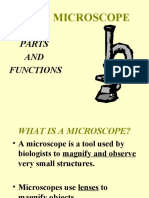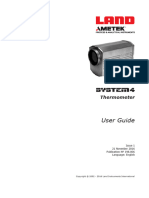Light – Reflection and Refraction
MCQs
1. Which of the following can make a parallel beam of light when light from a point source is incident
on it?
a) Concave mirror as well as convex lens b) Convex mirror as well as concave lens
c) Two plane mirrors placed at 90⁰ to each other d) Concave mirror as well as concave lens
2) The below figure shows a ray of light as it travels from medium A to medium B. Refractive index of
the medium B relative to medium A is
3) Beams of light are incident through the holes A and B and emerge out of box through the holes C
and D respectively as shown in the below figure. Which of the following could be inside the box?
(a) A rectangular glass slab (b) A convex lens (c) A concave lens (d) A prism
Q4) Magnification produced by a rear-view mirror fitted in vehicles:
(a) is less than one (b) is more than one (c) is equal to one
(d) can be more than or less than one depending upon the position of the object in front of it
Q5) In torches, searchlights, and headlights of vehicles the bulb is placed:
(a) between P and F of the reflector (b) very near to the focus of the reflector
(c) between F and C of the reflector (d) at C of the reflector
Q6) In which of the following, the image of an object placed at infinity will be highly diminished and
point sized?
(a) Concave mirror only (b) Convex mirror only (c) Convex lens only
(d) Concave mirror, convex mirror, concave lens and convex lens
Assertion Reason Questions: In each of the questions given below, there are two statements marked
as Assertion (A) and Reason (R). Mark your answer as per the codes provided below:
a) Both A and R are true and R is the correct explanation of A.
b) Both A and R are true but R is not the correct explanation of A.
c) A is true but R is false.
d) A is false but R is true.
Q7) Assertion: The light emerges from a parallel-sided glass slab in a direction perpendicular with that
in which enters the glass slab.
�Reason: The perpendicular distance between the original path of incident ray and emergent ray
coming out of glass slab is called lateral displacement of the emergent ray of light.
Q8) Assertion: The S.I. unit of power of lens is dioptre.
Reason: The power of the concave lens is positive and that of convex lens is negative.
Q9) Assertion: Distance of real image formed by a mirror is taken to be negative but for a lens we
take it with positive sign.
Reason: A mirror forms real image of an object in front of it but real image formed by a lens lies on
other side of lens.
Questions of 2 marks each
1) The linear magnification produced by a spherical mirror is -1/5. Analysing this value state the
(i) type of spherical mirror and (ii) the position of the object with respect to the pole of the
mirror. Draw ray diagram to justify your answer
2) A ray of light, incident obliquely on a face of a rectangular glass slab placed in air, emerges
from the opposite face parallel to the incident ray. State two factors on which the lateral
displacement of the emergent ray depends
3) An object is kept at a distance of 18 cm, 20 cm, 22 cm and 30 cm, from a lens of power + 5D.
(i) In which case or cases would you get a magnified image? (ii) Which of the magnified
image can we get on a screen?
4) Harshit went to palmist to show his palm. The palmist used a special lens for this purpose.
a) State the nature of the lens and reason for its use. b) Where should the palmist
place/hold the lens so as to have a real and magnified image of an object?
5) A security mirror used in a big showroom has radius of curvature 5m. If a customer is
standing at a distance of 20 m from the cash counter, find the position, nature and size of the
image formed in the security mirror.
Questions of 3 marks each
1) In the figure below a light ray travels from air into the semi-circular plastic block. Give a
reason why the ray does not deviate at the semi-circular boundary of the plastic block.
Complete the ray diagram of the above scenario when the light ray comes out of the plastic
block from the top flat end.
2) The image of an object formed by a mirror is real, inverted and is of magnification -1. If the
image is at a distance of 40 cm from the mirror, where is the object placed? Where would the
image be if the object is moved 20 cm towards the mirror? State reason and also draw ray
diagram for the new position of the object to justify your answer.
Long answer questions (5 marks each)
1) The image of a candle flame placed at a distance of 30 cm from a mirror is formed on a screen
placed in front of the mirror at a distance of 60 cm from its pole. What is the nature of the mirror? Find
�its focal length. If the height of the flame is 2.4 cm, find the height of its image. State whether the
image formed is erect or inverted.
2) a) A convex lens can form a magnified erect as well as magnified inverted image of an object
placed in front of it". Draw ray diagram to justify this statement, stating the position of the object with
respect to the lens in each case. b) An object of height 4 cm is placed at a distance of 20 cm from a
concave lens of focal length 10 cm. Use lens formula to determine the position of the image formed.
Case study based questions
1) A student took three concave mirrors of different focal lengths and performed the experiment to see
the image formation by placing an object at different distances with these mirrors as shown in the
following table-
Now answer the following questions-
a) List two properties of the image formed in case II.
b) In which one of the cases given in the table, the mirror will form a real image of the same size as of
the object and why?
c) Look at the table and identify the situation (object distance and focal length) which resembles the
situation in which concave mirrors are used as shaving mirrors? Give reason for your answer.
2) The ability of a medium to refract light is expressed in terms of its optical density. Optical density
has a definite connotation. It is not the same as mass density. On comparing two media, the one with
the large refractive index is optically denser medium than the other. The other medium with a lower
refractive index is optically rarer. Also the speed of light through a given medium is inversely
proportional to its optical density.
a) Refractive indices of glass, water and carbon disulphide are 1.5, 1.33 and 1.62 respectively. If a ray
of light is incident in these media at the same angle, then write the increasing order of the angle of
refraction in these media.
b) The speed of light in glass is 2 x 108 m/s and in water is 2.25 × 108 m/s. Which one of the two is
optically denser and why?
c) The refractive index of medium ‘x’ with respect to medium ‘y’ is 2/3 and the refractive index of
medium ‘y’ with respect to medium ‘z’ is 4/3. Calculate the refractive index of medium ‘z’ with respect
to medium ‘x’.



























































































